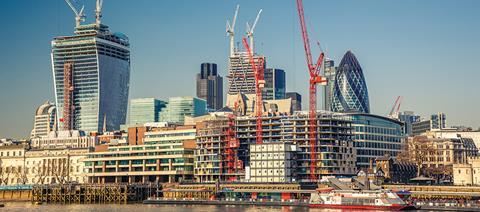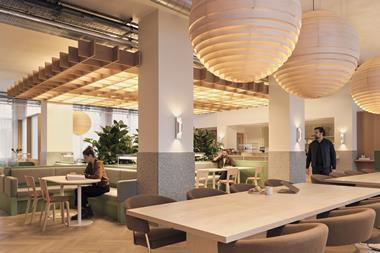There is plenty of optimism in the air, with warmer weather, loosened Covid restrictions and a strong vaccination programme signalling that we are hopefully moving in the right direction towards a return to normality.

The pandemic has brought our sector into the spotlight, transforming the way we view the built environment and generating uncertainty about its future. Before Covid, the office was without question a prerequisite for many British workers, but the past year has shown us that there is an alternative. Everyday tasks can be completed from home and remote working technology is capable of keeping pace with the extensive and varied demands of most employers.
So it is perhaps not surprising that some forecast a permanent decline in interest in the office from would-be occupiers, and that so much has been written proclaiming the death of the office.
Positive outlook
However, the horizon is much brighter than many believe, and our data and feedback from clients and occupiers paint a more positive picture for the future of the office – although they also show that the office we were used to will need to adapt for a modern working life.
One of the key takeaways from Knight Frank’s 2021 London Report is that occupier demand for office space has in no way been eliminated by the pandemic. At the start of the pandemic, about half of all London office stock under construction was already pre-let.
By the end of 2020, that figure was unchanged. Prime headline rents also remained in touching distance of the record-high levels seen before the pandemic, and 2020 saw a 32-fold increase in lease renewals. The vacancy rate across London’s office market now stands at just 7.8%, which is just 1.2% above the 10-year average.
Although there is still hesitancy among some occupiers regarding the future of the office, this data points to a deferral of decision-making to a more stable period, rather than an exodus from London’s prime office market.

In fact, our London Report reveals that shortages in supply, rather than demand, will underpin the London office market in the coming years.
During the height of the financial crisis in 2009, 80% of office space under construction in the City core was being built speculatively. This compares with the current cycle where nearly 33% of the development pipeline is already pre-committed.
Even if demand for new and refurbished office space in London were to drop to the levels seen during the global financial crisis – a severely pessimistic forecast – current stock under construction and due for completion this year (excluding pre-lets) would be unable to satisfy requirements.
Flight to quality
Our data does not indicate that demand for the office is drying up, rather that demand is changing.
Figures for space released by tenants point to a flight to quality among occupiers, and a strong preference for amenity-rich, grade-A space, which was bolstered by findings in our recent (Y)ourSpace report. Just over half the space released by tenants since the start of the pandemic has been grade B or below, indicative of a focus on prime office space that contains all the features necessary for our dynamic, hybrid future.
To maintain the appeal of grade-B office space, it will be essential to refurbish space to fit the refocused needs of the occupier. With the increasing importance of ESG considerations and a razor-sharp focus on the health and wellbeing of support staff, occupiers are increasingly valuing amenities and innovations that facilitate healthier workplaces. Green space, electric vehicle charging stations and more energy-efficient appliances will be core features of the next generation of offices.
Clearly the future office needs to adapt to the shift in the past year, and to compete with the home office, it needs to provide a space for flexible and sustainable collaboration. It will be vital to provide a high-quality environment to cement our company cultures, allow junior employees to learn by osmosis and for people to come together to collaborate on the bigger picture.

There is no doubt that an intelligently designed office sets itself apart as a workplace and rivals the home office when it is optimised for big-picture strategic operations and puts culture to the fore.
For all the talk of a mass extinction event for offices across the UK, the data seems to point to something else: the evolution of the office to a more flexible, sustainable and communal asset, ready to meet the demands of a rapidly changing world.






























No comments yet